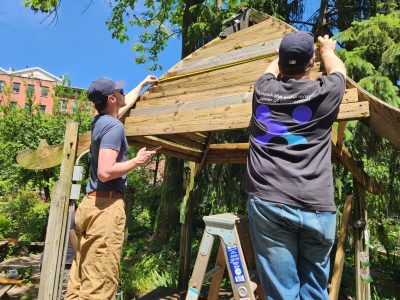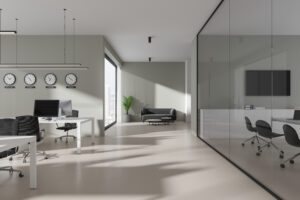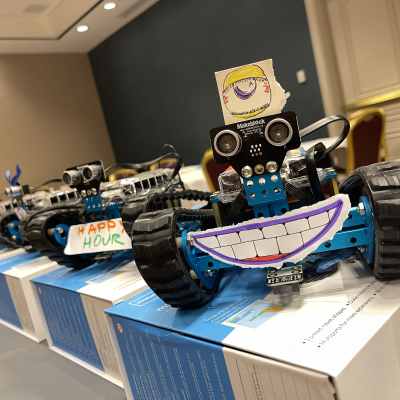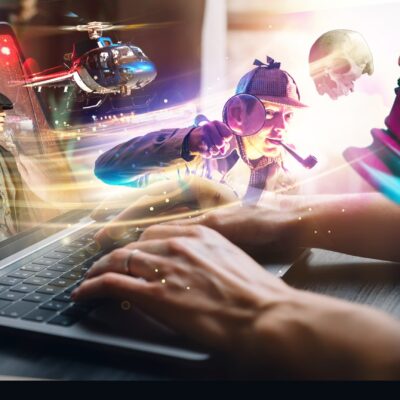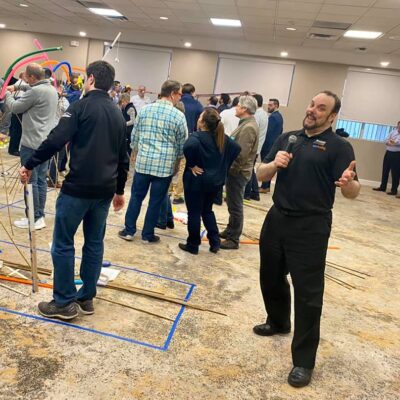Innovative Workplaces: Physical Workspace Design to Spark Engagement and Creativity
Whether we realize it or not, our workspaces play a very important role in engagement, creativity, and overall business success. Workplace design—physical and virtual—can significantly influence behavior, promote collaboration, teamwork, creativity, and foster a culture of innovation.
This is especially important when you consider the fiercely competitive business landscape and need for constant innovation. Innovative workplaces can unlock employee potential, improve your company culture, encourage collaboration, and drive business growth. Workplace design is yet another tool to help you succeed that you should be utilizing. Let’s explore how you can design workspaces for in-person and remote employees to spark engagement and creativity.
Design Open Spaces for Activity-Based Working
The concept of activity-based working is the idea that individuals have different needs throughout the day and offering a variety of workspaces allows employees to choose the environment best suited for their current task.
For example, someone might have a report to write in the morning whenthey need a quiet and solitary environment, but in the afternoon they’re working on a project that requires input from other employees. An office workspace designed for activity-based working gives that person the freedom to utilize the best workspace for the task at hand.
The activity-based work model offers numerous benefits such as helping encourage conversation, build bonds, foster creativity, which plays an important role in the workplace.
Create Work Settings That Cater to Different Work Styles & Tasks
Everyone works differently and has thier own needs and preferences that can change throughout the day depending on what they’re working on. Point being, it’s important to create work settings that cater to those different work styles and tasks.
Consider incorporatingquiet enclosed spaces for more focused work like writing reports or taking calls. Offering these types of spaces can also provide employees somewhere to get away from the hustle and bustle when needed.
On the flip side, a lounge area that encourages social interaction is also important. These are perfect for brainstorming sessions, casual discussion, relationship building, and more. They can also serve as a place to take a breather and relax.
Another option to consider is noise canceling technology, which can be integrated into individual work pods to create personalized and focused environments within an open office layout.
Lastly, you shouldn’t forget to encourage employees to decorate a bit. Things like plants, photos, artwork, posters, and knick-knacks can add a lot of character that helps employees get comfortable and feel relaxed, increasing their productivity and creativity.
AI-Powered Office of the Future
Before moving on, let’s consider what a potential AI-powered office of the future may look like. AI will allow us to have even more individualized and finely turned workspaces than ever before.
AI-powered personalized workstations could adjust automatically to individual preferences, changing things like desk height, temperature, and lighting instantly. AI-powered room book systems could analyze team composition and project requirements, finding the ideal workspace for optimal collaboration and performance.
While some of this may seem sci-fi, AI is quickly becoming an essential part of many businesses. It’s only a matter of time before the AI-powered office of the future is a reality and further helps improve workspace design.
Create Innovation Zones
When it comes to workplace design and innovation, another important concept is innovation zones. Innovation zones or “maker spaces” are areas or workspaces set-up to enable and encourage innovation.
For example, “maker spaces” are typically equipped with things like 3D printers, laser cutters, and other prototyping tools, making it easy for employees to quickly build and test their ideas. This can help bolster innovation, improve teamwork, and more.
You can also set-up recreational areas that double as innovation zones. These can feature games or activities that encourage creative problem solving and design thinking.These spaces can also be a great place for team building activities, such as Product Pipeline or Virtual Escape Room which improve collaboration and creativity, while giving your employees a break from the stress.
As you can see, the impact of workplace design on innovation and productivity is huge. Innovative workplace design can help you and your employees be as creative, innovative, and collaborative as possible, ultimately driving your company toward success.
Integrate Technology Seamlessly
It should come as no surprise that technology also plays an important role in workspace design. Integrating technology seamlessly can facilitate real-time collaboration, remove workflow disruptions, and enhance the user experience.
- Digital whiteboards allow for quick and seamless collaboration, letting people share documents, make notes directly on the whiteboard, and share ideas.
- Cloud-based project management platforms and tools allow for much faster and more efficient collaboration. People can upload and share documents instantly with ease, allowing collaboration to occur constantly.
- Something as simple as placing key pieces of technology like printers in easy to access places can increase efficiency, as well as subtly encourage more social interaction and collaboration.
- Smart features such as smart temperature and lighting controls make it easier for team members to adjust things as necessary, saving time and creating a more comfortable working environment.
- You can also integrate technology via team building. Our Mr. Roboto team building game for example in which teams build functional robots and pilot them via an app. This event can help develop communication, collaboration, leadership, and design thinking.
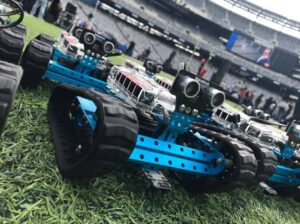
Office Technology of the Future
Now, let’s think a little bit about the potential office technology of the future and the role it might play in workspace design.
Holograms, not dissimilar from the ones seen in films like Star Wars, are likely to be common in the future. This technology already exists and is used, but it is still too cost prohibitive to be widespread. However, that will eventually change. Holographic technology could enable remote team members to have a physical “presence” in meetings via a hologram. This could make remote team members feel closer to their fellow employees, allow for more non-verbal communication, and create a better sense of community with remote teams.
Another promising technology is augmented reality (AR). Unlike virtual reality (VR), AR provides a supplement to what you are currently seeing instead of an entirely virtual reality. It can be used to provide contextual data and enhance collaboration.
Promote Well-being and Sustainability
Wellbeing and sustainability also are an important factor in office workspace design. They can help your employees be more comfortable and productive, while also helping you attract and retain top talent who value sustainability.
- Musculoskeletal issues and general office pains are common, and they can hinder productivity. By focusing on ergonomic furniture and adjustable workstations, you can promote physical comfort, well-being, and increase efficiency. On top of that, an emphasis on natural light can improve mood and cognitive function, increasing performance.
- Biophilic design elements can help too. Art that is inspired by plants, natural materials, and other natural elements can have a positive impact on creativity.
- Consider team building activities and events that emphasize employee wellness. Our Employee Wellness Program is a great opportunity to take some time and focus on your employees and their health, resulting in better outcomes at work.
- As for sustainability, utilizing environmentally friendly materials and renewable energy sources in your workspace design can show your commitment to sustainability. This in turn can help attract and retain talent that values the environment.
Involve Employees in the Design Process
It’s essential to acknowledge the importance of involving employees in the design process. After all, it’s them who will be working in these spaces…gather their input on needs and preferences to ensure the space is tailored to their requirements.
Also, remember that workplace design is an ongoing process. It doesn’t stop once the changes are made. You should regularly evaluate how the space is being made, and how employees feel about it (good and bad), and make changes as necessary.
Innovative Workplaces and TeamBonding
Workspace design is more important than one might think. The right workspace(s) can lead to increased employee engagement, improved collaboration, heightened creativity, and greater business success. Though it can seem costly, creating innovative workplaces can offer a great return on investment.
Team building is also important when it comes to workspace design, as it can help create a strong and positive company culture while not losing sight of human relationships and connections. At TeamBonding, we have over 25+ years of experience and a wide range of events that can help your teams build a strong bond. So start building an innovative workplace and get in touch with us today.
Get more insights in our newsletter:
* every subscription supports charity!
Plays well with these activities.

 Unlock exclusive resources for better teams. Every subscription supports charity!
Unlock exclusive resources for better teams. Every subscription supports charity!
Create Your Free Account
Get exclusive access to new programs from the TeamBonding Lab, save your favorite ideas, and track your upcoming events.
Already have an account? Login


